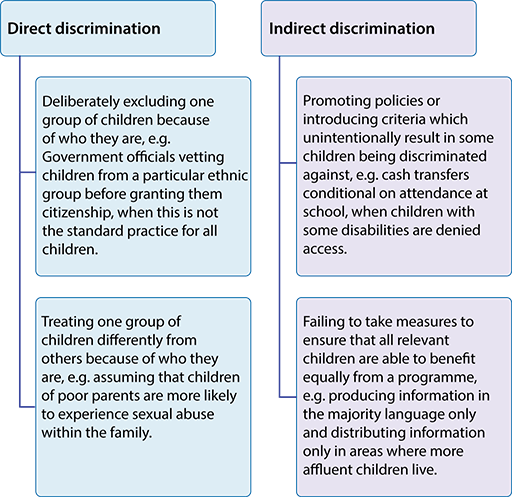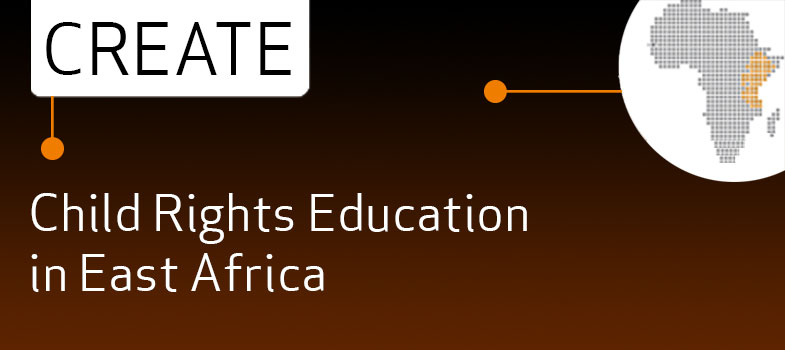2.8 Different types of discrimination
Discrimination can occur at any level in a society. It can be practiced by governments, by adults against children, by one community against another, or one group of children against another. It can arise from active, direct and deliberate actions, or it can take place unconsciously through insensitivity, ignorance or indifference. These two types of discrimination that arise from either deliberate action or indifference are called direct and indirect discrimination (Figure 2.3). It is important that you understand the difference because they need to be tackled in different ways.
Direct discrimination
This occurs when an action, activity, law or policy deliberately seeks to exclude a particular group of children. In some countries, for example, children with disabilities are classified as either ‘educable’ or ‘non-educable’, the latter being denied the right to education. In many countries, the marriage age, and that of sexual consent, is lower for girls than boys, and children born outside marriage are denied equal rights. Legislation can also discriminate against all children as a group – for example, laws that permit children to be subjected to assault through physical punishment, when the same assault against an adult would constitute a criminal offence. In a recent consultation carried out in Tanzania for this module, young people repeatedly commented that nurses would treat children nicely when they were private patients, but would be rude and disrespectful to others, a clear example of discrimination against poorer children.
Indirect discrimination
This occurs when an action, law or policy has the consequence of excluding or harming particular groups of children, even if that was not its intention. For example, holding clinics in areas where there is no public transport may result in discriminating against poorer children. A health facility would discriminate indirectly against some children with disabilities if it was based in a building that they find difficult to get into. Young people in Tanzania described examples of children with disabilities being removed from health care lists, and a total lack of any attempt to provide accessible facilities, such as ramps or adapted toilets. Without these adaptations, children with disabilities are indirectly discriminated against in their right to health care.

Multiple discrimination
Discrimination can occur on more than one ground, for example, relating to both age and gender, or to both language and cultural background. To give an example, a girl may experience discrimination because of:
- her gender, including low status within her family
- a reluctance to send her to secondary school
- an expectation that she will do domestic chores
- vulnerability to physical and sexual violence.
If she also has a disability, she may suffer further discrimination. A very common form of multiple discrimination arises when children of poor parents also belong to an ethnic or religious group that is already excluded or treated differently. Poverty and other types of discrimination can work together to reinforce exclusion.
2.7 What is meant by ‘non-discrimination’?
